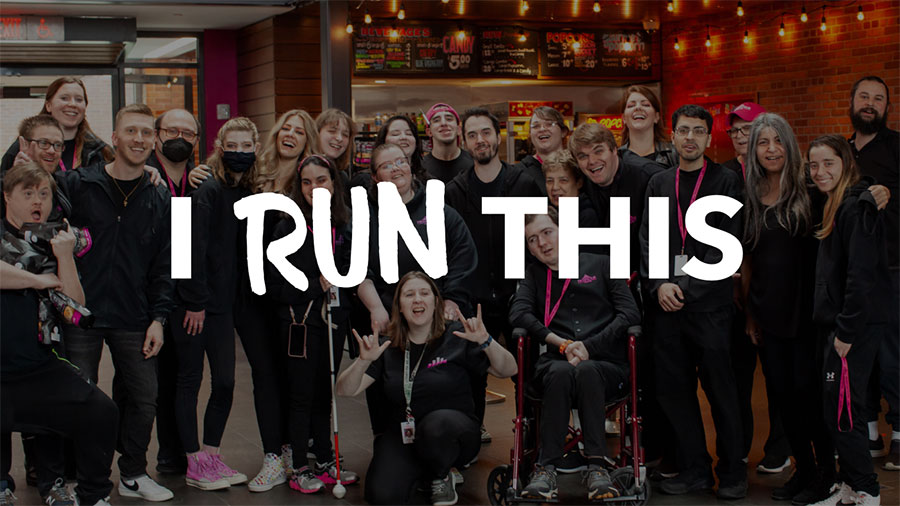My name is Ryan Hudson-Peralta, and I am a father, husband, designer, entrepreneur and international speaker who just happened to be born without hands. I was born with congenital limb deficiency. This is a nongenetic birth defect that left me with a body much different from the average person’s: I have no hands or knees, and my legs are short, which makes me unable to walk. I’m always thinking about ways to make life easier for folks who face the kinds of physical challenges I do. For the past 6+ years, I have dedicated a major portion of my time to mentoring children born with similar disabilities, traveling to their homes and sharing the tools and tricks I have learned over the years.
I have devoted my professional life to breaking down barriers in the business world, specifically in design. I have worked both as a freelance designer and as the principal designer at several companies. I’m currently employed at a well-respected fintech company in Detroit, Michigan.
I typically label myself as simply a "designer." I keep it general on purpose because I have pretty much designed everything you can think of, including branding, clothing (adaptive and non-adaptive), physical spaces, packaging, applications for the U.S. Army, mobile apps, websites, and so much more.
I'm excited to share some best practices I have learned over the past 25 years in the business world, along with important things to remember when hiring employees with disabilities. My personal and professional experience make me uniquely informed on this topic. I’ll provide an overall perspective from a business owner, employee, and potential customer with a disability.
Consider disabilities when hiring employees.
There are a few areas to consider here:
When writing job posts, make sure they are inclusive. A job description should include clear expectations and potential accommodations so all potential employees know exactly what is expected of them and there are no surprises.
Additionally, avoid using ableist descriptors such as "fast-paced" or "energetic." Instead, use phrases such as "able to work quickly" or "willing to work hard." This will make your job postings more inclusive of people with disabilities.
Create an environment in which employees or potential employees with disabilities feel comfortable asking for assistance. From the moment you first start talking, make sure that a new/potential employee knows they are in a safe space to ask for assistance or accommodations.
Here are some ways you can do this:
- Include a statement in your job postings that says something like, “At our company, we are committed to ensuring that all employees feel comfortable requesting accommodations.”
- Make sure that your office is set up in a way that makes it accessible and easily navigable for people with different disabilities. This includes things like having a ramp to the front door, wide hallways and doorways, and accessible bathrooms.
Make your physical spaces, including offices and stores, more accessible for all disabled people—customers and employees.
Have team members with disabilities on your staff leading, evaluating, and planning your spaces. Team members with disabilities will know exactly what to look for because they live life through that lens. They are the experts when it comes to navigating spaces. Try to involve team members with disabilities in all aspects of the project, not just consulting or assisting.
Have team members with disabilities be part of the team that is designing your products. Having team members with disabilities designing your products brings that different perspective that only they can offer. After the project is designed and running, include your disabled team members in testing and training sessions, so they can provide insight on how things are working and how they can be improved.
Ensure your website follows the rules and requirements of the Americans with Disabilities Act (ADA).
Inclusive design is good design for everyone. Most young people without disabilities don’t think about this, but aging is the great equalizer: eventually, we all end up with some form of disability. Following the rules of the ADA means your website will be easier to use for everyone. A lot of the ADA-compliant rules make things more accessible for everyone. From color contrast, font size, button tap areas, and proper labels to simple headings and spacing, these things make for a better user experience for everyone.
Some of the most successful products that I use on a daily basis were not originally designed for people with disabilities—for example, Bluetooth headsets, Alexa devices, and bidet toilet seats. These products are popular with the masses because they are convenient and easy for everyone to use. When you start thinking about designing for everyone as opposed to just designing for a certain group of people, that is when you will have a successful product.
Final Thoughts
As someone with a disability, I know that this world was not designed for me, and I have to
navigate it differently than others do. That is why it is so important for business owners to help people with disabilities, like myself, feel more comfortable using their products and
spaces. We already have to work harder just to live our daily lives, so a little consideration goes a long way.
Thank you for taking the time to read my post, and thank you to QuickBooks for allowing me to share my story in the Ask the Expert series. I have made it my mission in life to help people learn and grow. If I can ever be of any assistance or answer any questions for you in the future, please feel free to reach out to me on my website (LookMomNoHands.com) or my Instagram (@lookmomnohands) and TikTok (@LookWorldNoHands).











